Drought DefinitionDrier than usual circumstances are referred to as a drought. According to this definition, a moisture shortage compared to the typical water availability in a given place and season constitutes a drought. A drought may continue for several days, months, or even years. The ecology and agriculture of impacted areas are frequently severely harmed by drought, which negatively influences the local economy. The likelihood of a drought forming and subsequent wildfires is greatly increased during the annual dry seasons in the tropics. Hot periods can considerably worsen drought conditions by accelerating the evaporation of water vapor. 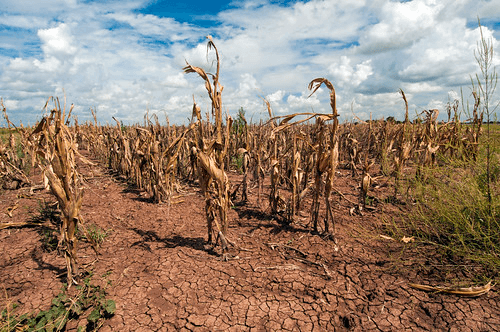
Most of the world's climates frequently experience drought, which is growing increasingly extreme and unpredictable due to climate change, which dendrochronological studies trace back to 1900. Environmental, economic, and social repercussions are the three types of drought effects. Wetlands drying out, wildfires being more numerous and intense, and biodiversity loss are some environmental repercussions. Water supply issues for the energy industry, decreased fishing, hunting, and agricultural productivity, higher food production costs, and disruption of water supplies for metropolitan economies are just a few of the negative economic effects. The detrimental impact on people's health directly impacted by this phenomenon (extreme heat waves), high food prices, stress brought on by poor harvests, water scarcity, etc., are only a few examples of the social and health consequences. Protracted droughts have brought on mass migrations and humanitarian crises. Many plant species, including those in the Cactaceae family (often known as cacti), have adaptations for drought tolerance, such as smaller leaves and waxy cuticles, to improve their capacity to withstand drought. At the same time, others remain as buried seeds during dry spells. Arid biomes like grasslands and deserts are created by semi-permanent drought. Arid ecosystems generally have poor productivity by nature. The Atacama Desert in Chile continues to experience the longest drought in recorded history (400 years). Because of the effects on food supply and society, humans have historically tended to see droughts as "disasters." Droughts are a natural calamity that people have occasionally attempted to explain as the product of either supernatural forces or human-caused natural disasters. Definition:A drought is "drier than normal conditions," according to the IPCC Sixth Assessment Report. According to this definition, a drought is "a moisture deficit relative to the average water availability for a certain place and season." 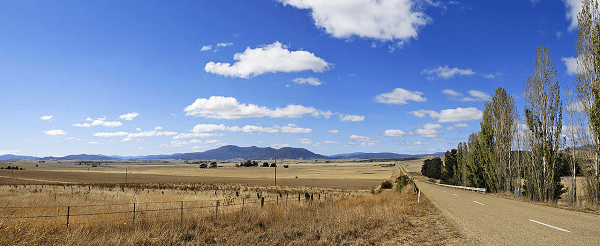
A lack of precipitation over a protracted period that causes a water shortage is the definition of drought provided by the National Integrated Drought Information System, a multi-agency partnership. A lack of precipitation that negatively affects people, animals, or vegetation across a sizable area is what the National Weather Service office of the NOAA refers to as a drought. Measuring and describing drought is challenging; a complicated condition related to the lack of water. There were more than 150 documented definitions of "drought" by the early 1980s. Different geographies, needs, and disciplinary viewpoints are reflected in various definitions. Categories:According to where in the water cycle the lack of moisture occurs, the three primary types of drought are weather-related droughts, hydrological droughts, and agricultural or ecological droughts. Reservoirs' low runoff, streamflow, and storage levels indicate a hydrological drought. The combination of evaporation and low soil moisture during an ecological or agricultural drought stresses plants. Some organizations include a different category: socioeconomic drought, which happens when a water shortage due to weather causes a rise in demand over a decline in supply for a particular economic item. A notion analogous to water shortage is the socioeconomic drought. While the causes of the many types of drought vary, their effects are similar:
Causes:Lack of precipitation in general:Convective, stratiform, and orographic rainfall are some of the mechanisms that cause precipitation. Convective processes contain substantial vertical motions that might cause the atmosphere to overturn in that region within an hour, in contrast to stratiform activities, which involve less severe upward motions and precipitation over a longer period. Precipitation can be divided into three categories: whether it falls as ice, liquid water that immediately freezes, or liquid water that does not. The majority of droughts occur in regions with low average rainfall levels. 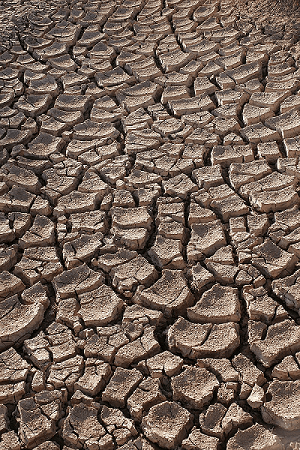
Drought results when these elements fail to provide enough support for precipitation quantities to accumulate at the surface for an extended period. High levels of reflected sunlight, an above-average frequency of high-pressure systems, winds that carry continental air masses rather than oceanic ones, and ridges of high-pressure areas above can all cause or contribute to drought. High-pressure area ridges can also stop or restrict the development of thunderstorm activity or rainfall over a specific area. Once a place enters a state of drought, feedback processes include local arid air, hot weather that can encourage heated core ridging, and low evapotranspiration can exacerbate drought conditions. Dry season:The Intertropical Convergence Zone, often known as the Monsoon trough, causes distinct wet and dry seasons to manifest throughout the tropics. Watering holes and rivers dry up during the dry season, marked by its low humidity and a significant increase in the likelihood of drought. Many grazing animals are compelled to relocate in search of more fertile regions due to a scarcity of these watering holes, which causes a water shortage. Zebras, elephants, and wildebeest are just a few examples of these species. Bushfires frequently occur due to the lack of water in the vegetation. As water vapor consumes more energy as the temperature rises, more water vapor is required to bring relative humidity values to 100%. (or to get the temperature to fall to the dew point). Warmer weather speeds up fruit and vegetable production, increases plant transpiration and evaporation, and exacerbates drought situations. Lack of Precipitation as a Result of Climate Change:Droughts are predicted to be brought on by global climate change and to have a significant negative impact on agriculture worldwide, particularly in developing countries. Drought in some locations may be accompanied by increased erosion and flooding in other areas. Some suggested climate change mitigation strategies that focus on more proactive efforts, such as managing solar radiation by installing a space sunshade, which could worsen the danger of drought. Compound warm-season droughts are becoming more frequent in Europe, and potential evapotranspiration is also rising. Many drought-related elements, such as the amount of rain that falls and how quickly it evaporates again, are impacted by climate change. Droughts will become more severe and frequent throughout the earth due to warming over land and increased atmospheric evaporative demand. Scientists predict that future rainfall patterns around the globe will change as a result of global warming. So, many regions, including subtropical ones like the Mediterranean, southern Africa, south-western Australia, and south-western South America, as well as tropical ones like Central America, western Africa, and the Amazon basin, would be more vulnerable to drought in the future. 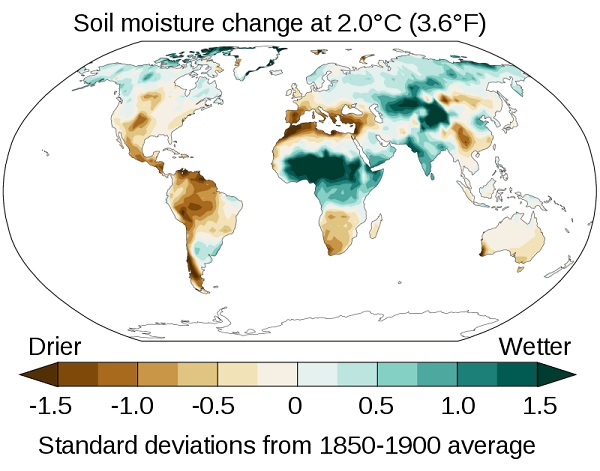
According to physics, evaporation rises as temperature rises. This will result in drier soil and more stressed plants, impacting agriculture. Because of this, soil drying will occur even in areas where significant increases in precipitation are not anticipated (like central and northern Europe). According to a scientific projection, in 2022, a third of the world's geographical areas will experience at least significant drought by 2100 if greenhouse gas emissions are not reduced. When droughts come, they'll be worse than in the past. It is frequently impossible to ascribe a single drought to human-induced climate change because of the constraints on how much data is available about drought in the past. Nonetheless, the impacts of human activity are already seen in several areas, including the Mediterranean and California. These effects are exacerbated by rising water consumption, population growth, urbanization, and environmental preservation initiatives in many places. Droughts have become more frequent and last longer: between 2000 and 2022, these two factors grew by 29%. According to the forecast, more than 75% of people will live in drought-stricken areas by 2050. Drought damage can be lessened through land restoration, especially through agroforestry. A Special Report on Climate Change and Land was published in 2019 by the Intergovernmental Panel on Climate Change. The report's key findings are as follows: Between 1960 and 2013, the area of drylands experiencing drought rose by 1% per year. In areas affected by desertification between the 1980s and 2000s, about 500 million people lived there in 2015. Individuals who reside on the desertified and degraded territory are "increasingly badly impacted by climate change." There have previously been some seemingly contradictory findings in the scientific literature regarding how drought changes due to climate change. This was discovered to be mostly caused by issues with data collecting and processing, such as those in the Palmer Drought Severity Index (PDSI) formulation and the data sets used to calculate the evapotranspiration component. The correct identification of the causes of drought also necessitates considering natural variability, particularly the influence of the El Nio Southern Oscillation (ENSO), and improved analysis of precipitation data. Combined with Human Activity:Excessive farming, irrigation, deforestation, and erosion are aggravating variables that can be directly triggered by human activity and negatively affect the ability of the soil to hold and catch water. The main cause of erosion in arid environments is wind. The wind's movement of the materials can cause erosion. Little particles may be lifted by the wind and carried to another area (deflation). Wind-borne particles may contact solid objects, resulting in deterioration through abrasion (ecological succession). In general, wind erosion happens in places with little to no vegetation, frequently in places with insufficient rainfall to maintain vegetation. Loess is a wind-blown deposit (Aeolian), often non-stratified, porous, friable, mildly coherent, frequently calcareous, fine-grained, silty, pale yellow or buff, and homogeneous. Typically, it appears as a thick blanket deposit that covers hundreds of square kilometers and is several tens of meters thick. Loess frequently grows on vertical or steep faces. Loess frequently turns into extremely rich soils. Areas with loess are among the most agriculturally productive worldwide when the right meteorological conditions are present. Loess deposits naturally disintegrate quickly due to their geological instability. Farmers frequently plant windbreaks (such as large trees and bushes) to stop loess from being eroded by wind. In dry regions and during droughts, wind erosion is substantially more severe. For instance, soil loss from wind erosion in the Great Plains might be up to 6100 times more in drought than in rainy years. ConsequencesThe three categories of environmental, economic, and social repercussions of droughts and water shortages include (health). About the effects on the environment: Lower levels of surface and underground water, lower flow rates, an increase in surface water pollution, the drying up of wetlands, more and larger wildfires, a greater intensity of deflation, a loss of biodiversity, deteriorating tree health, and the appearance of pests and dendroid diseases are just a few of the consequences. Reduced output in the agriculture, forestry, game, and fishing industries, higher food production costs, decreased energy production levels in hydroelectric plants, losses in tourism and transportation revenue, issues with water supply for the energy sector, problems with water supply for technological processes in the metallurgy, mining, chemical, paper, wood, foodstuff industries, etc., and disruption of water supplies for municipal economies are just a few examples of the economic losses. 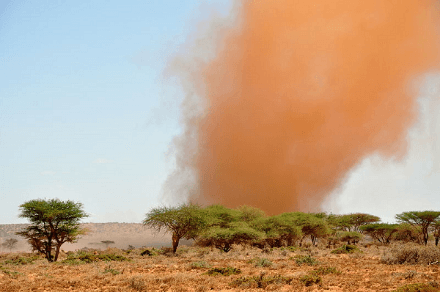
Social and health expenses include the detrimental impact on the health of those directly impacted by this occurrence (excessive heat waves), potential water supply restrictions, elevated pollution levels, high food prices, stress from poor harvests, water scarcity, etc. This explains why water scarcity and droughts function as a factor widening the divide between industrialized and developing nations. Impacts change based on vulnerability. For instance, subsistence farmers are more inclined to relocate during a drought because they have no other food sources. Famine is more likely to strike areas where most of the population relies on water supplies for their primary source of sustenance. Economic and Environmental EffectsCommon drought effects on the environment and economy include:
Social and Physiological Effects
Effects on Crops:Water stress has several effects on plant growth and quality. For instance, dryness can lead to poor seed germination and stunted seedling growth. Cellular division, cell proliferation, and cell differentiation are necessary for plant growth. With the reduction of turgor pressure, drought stress reduces mitosis and cell elongation, impairing growth. Because turgor pressure, nutritional concentration, and carbon assimilation are also necessary for leaf development, drought stress causes a reduction in leaf size and quantity. All of these factors are decreased by drought conditions. In maize, it has been observed that water restriction reduces plant height, biomass, leaf size, and stem girth. Drought stress has a detrimental impact on agricultural yield as well. This is because drought stress causes changes in leaf development, a drop in photosynthetic rate, and a different distribution of resources. Reduced leaf water potential and transpiration rate are negative effects of drought stress on crop plants. Crops like wheat have higher water use efficiency, while others like potatoes have lower efficiency. Drought conditions impede these processes, which results in stunted growth. Plants require water to uptake nutrients from the soil and transport nutrients throughout the plant. As there are fewer photosynthetic tissues, stomata close, and the photosynthetic machinery performs less efficiently under drought stress, there is also a decline in photosynthetic activity in plants. The decline in plant growth and yields results from this decline in photosynthetic activity. Resource allocation is another factor affecting decreased plant growth and yields. Drought stress causes plants to direct more resources into the roots to aid in water absorption. This causes the growth of the roots to outpace the growth of other plant components, reducing yields. Defending, Reducing, and Relieving:In agriculture, irrigation, and crop rotation can help people lessen the effects of drought. Due to ever-rising population densities, failing to create adequate drought mitigation methods has a terrible human cost in the modern day. The Soil Conservation Service (SCS), now known as the Natural Resources Conservation Service, was founded on April 27, 1935, by presidential proclamation (NRCS). Each state that enacted the law received models of the law. These were the first long-lasting, effective initiatives to lessen the likelihood of future droughts. They led to the establishment of organizations emphasizing soil conservation practices to safeguard farmland today. Water conservation received much attention in the 1950s when it was included in the law (NRCS 2014). 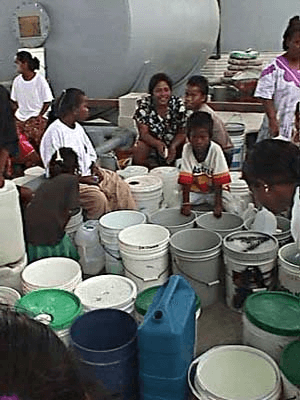
The following are methods for preventing, reducing, or alleviating drought:
Scale and Examples:Large-scale droughts that occurred in the 21st century included:
The Darfur conflict has its roots in several factors, including drought, desertification, and overpopulation. As a result, Arab Baggara nomads searching for water are compelled to relocate their livestock farther south to territory predominantly populated by non-Arab farmers. Decades of drought contributed to the strife in Darfur, Sudan, which also impacted Chad. 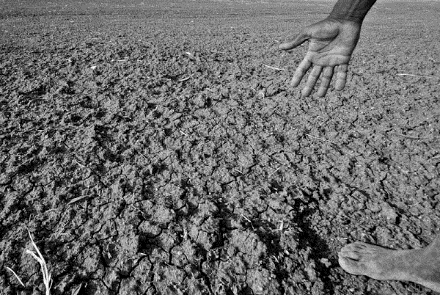
In the Himalayan rivers' drainage basin, there are about 2.4 billion people. In the upcoming decades, floods and droughts could affect countries including India, China, Pakistan, Bangladesh, Nepal, and Myanmar. Given that the Ganges feeds more than 500 million people with drinking water and agricultural irrigation, the drought in India that is damaging is particularly concerning. It would also impact North America's west coast, which receives much of its water from glaciers in mountain ranges like the Sierra Nevada and Rocky Mountains. The greatest drought in a century hit sections of the Amazon basin in 2005. According to the Woods Hole Research Center research, the forest in its current state could only withstand three years of drought, according to a 23 July 2006 story. In the report, researchers from the Brazilian National Institute of Amazonian Research claim that the region's rainforest is on the verge of irreversibly dying because of this drought reaction and the consequences of deforestation on the local climate. It concludes that the rainforest is in danger of becoming a savanna or a desert, which would have disastrous effects on the global climate. According to the WWF, combining climate change and deforestation enhances the drying effect of dead trees, which feeds forest fires. The outback, or desert or semi-arid areas, comprise most of Australia. In a 2005 study, Australian and American researchers looked into the reasons behind the interior's desertification and proposed that one had to do with the roughly 50,000-year-old arrival of early human settlers. These settlers' regular burning may have stopped monsoons from reaching interior Australia. When the Murray-Darling basin did not receive enough water by October 2008, an expert panel warned that the entire basin would suffer serious, possibly irreversible, long-term ecological harm. This warning was made public in June 2008. According to a government-commissioned assessment released on July 6, 2008, future droughts in Australia may be more severe and frequent. Tim Flannery, an Australian environmentalist, warned Perth, Western Australia, that unless it made significant changes, it might turn into the world's first ghost metropolis-an abandoned city without enough water to support its inhabitants. In 2010, the lengthy Australian Millennial drought ended. Food shortages in 1984-1985, 2006, and 2011 were caused by severe ecological catastrophes caused by recurrent droughts that resulted in desertification in East Africa. An estimated 50,000 to 150,000 people are said to have perished during the 2011 drought, though these numbers and the severity of the crisis are under question. The UN declared the crisis over in February 2012 after increasing humanitarian efforts and a bountiful harvest. The focus of aid organizations then moved to recovery initiatives, such as building irrigation canals and dispersing plant seeds. In terms of duration and severity, the Horn of Africa drought in 2020-2022 eclipsed the terrible one in 2010-2011. A severe drought hit the western Sahel in 2012. A month-long heat wave looming over Niger, Mali, Mauritania, and Burkina Faso put more than 10 million people in the region at risk of going hungry, according to the Methodist Relief & Development Fund (MRDF). A grant of roughly £20,000 was given to the nations affected by the drought. HistoryThroughout the beginning of time, humans have typically seen droughts as "disasters" because of their effects on society and food availability. Humans have frequently attempted to explain droughts by blaming them on either natural disasters caused by humans or supernatural entities. It is one of the earliest climate occurrences that has been recorded. It is mentioned in the Epic of Gilgamesh and connected to the Biblical account of Joseph's entry into and subsequent Exodus from ancient Egypt. Migrations of hunter-gatherers into Chile about 9,500 BC and early humans from Africa into the rest of the world approximately 135,000 years ago have been connected to the phenomena. Drought prevention and averment rituals include dances, scapegoating, and human sacrifice. But, more logical approaches to water management have largely displaced such antiquated traditions and reduced them to folklore. 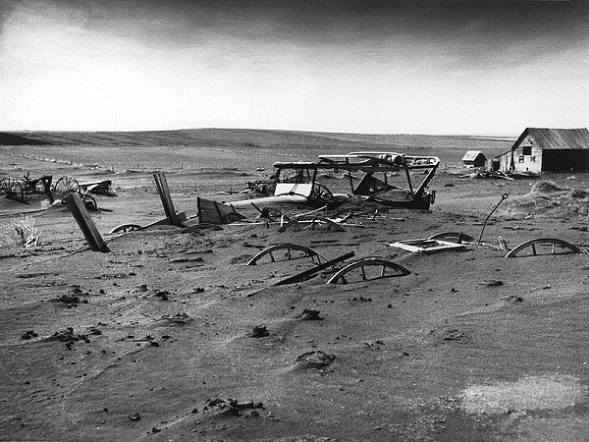
Droughts in the Past Include:
Conclusion:As a result of its negative impacts and associated fatalities, drought is a natural disaster. The conservation, storage, and extension of water sources are typically part of drought management strategies. Drought has detrimental effects on the ecosystem, leading to biodiversity loss. Many initiatives have been put in place to lessen the effects of drought. To conserve water for usage during droughts, disaster management organizations have carried out projects like building dams. Inhibiting the causes of the drought was part of minimizing its effects. Drought can be significantly reduced by reducing erosion by planting enough plants. Control should also be exercised over human activity. |
 For Videos Join Our Youtube Channel: Join Now
For Videos Join Our Youtube Channel: Join Now
Feedback
- Send your Feedback to [email protected]
Help Others, Please Share









